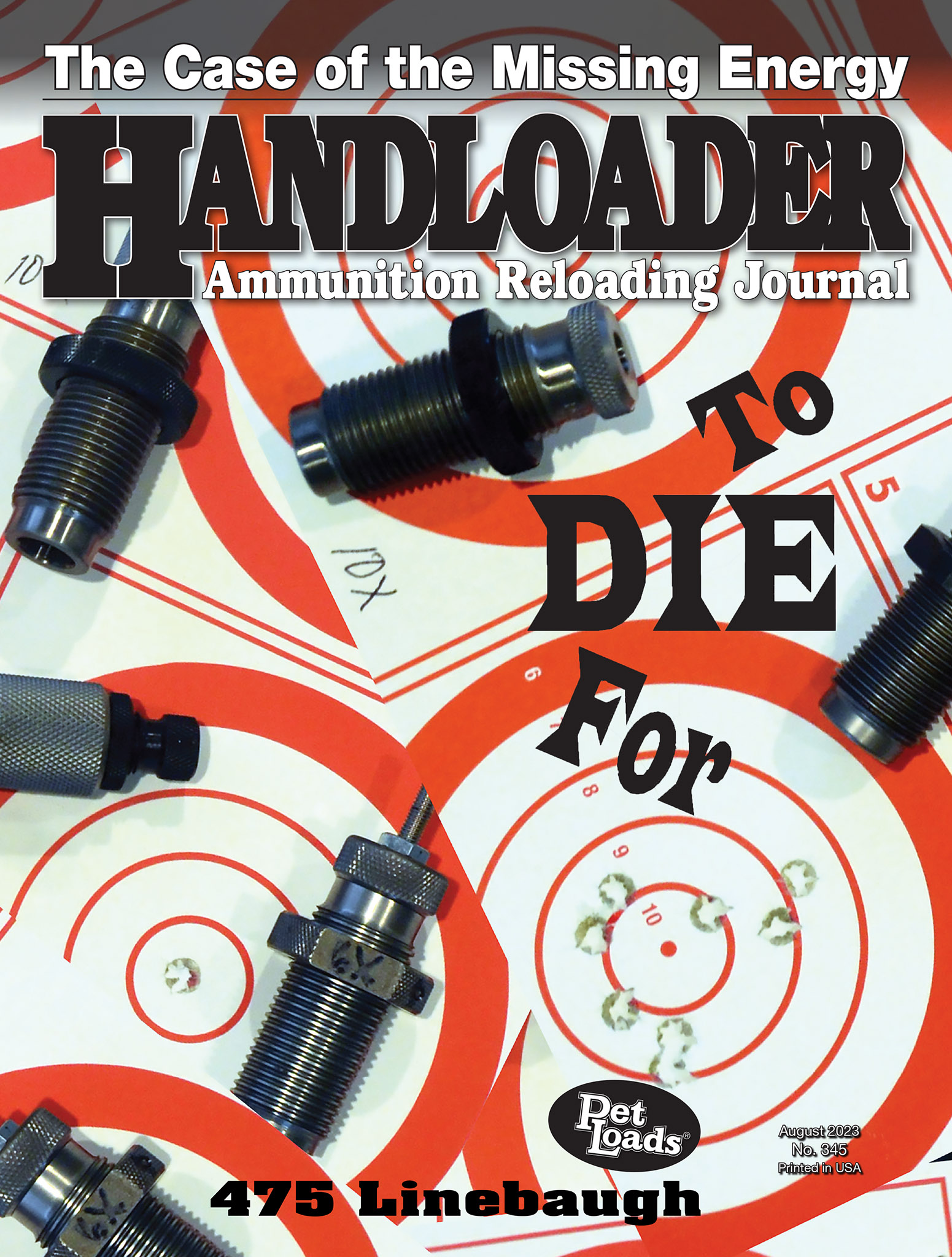Reloader’s Press
Budget Benches and Slick Setups
column By: Jeremiah Polacek | August, 23
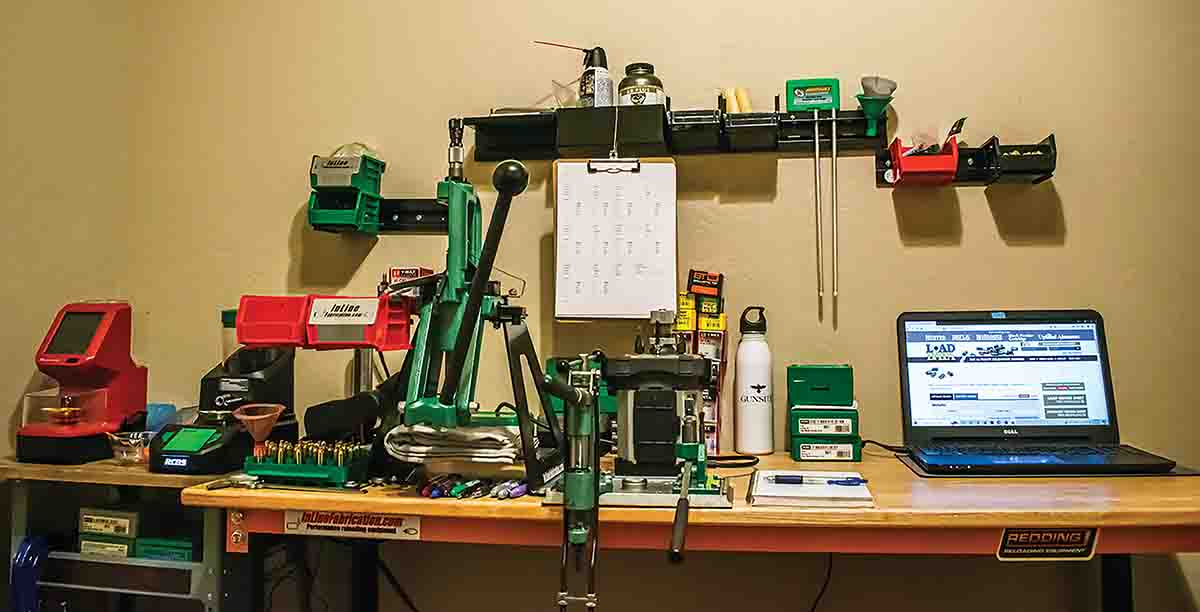
Selecting a bench is no easy task and many questions must be answered. Hopefully, this will help answer some of those questions and provide food for thought. The room is only 9.5 by 9.5 feet, which is relatively small compared to other rooms that have been overtaken by ambitious handloaders, myself included. I must admit that this is not a primary setup for the handloading that is conducted. However, this setup must be able to accomplish all the normal tasks that an above-average handloader may perform, including, but not limited to, bullet casting, sizing cast bullets, forming wildcat cartridges and producing high-quality handloads. To make matters more challenging, only half of the room could be successfully occupied, after all, vacuums and wrapping paper must go somewhere.
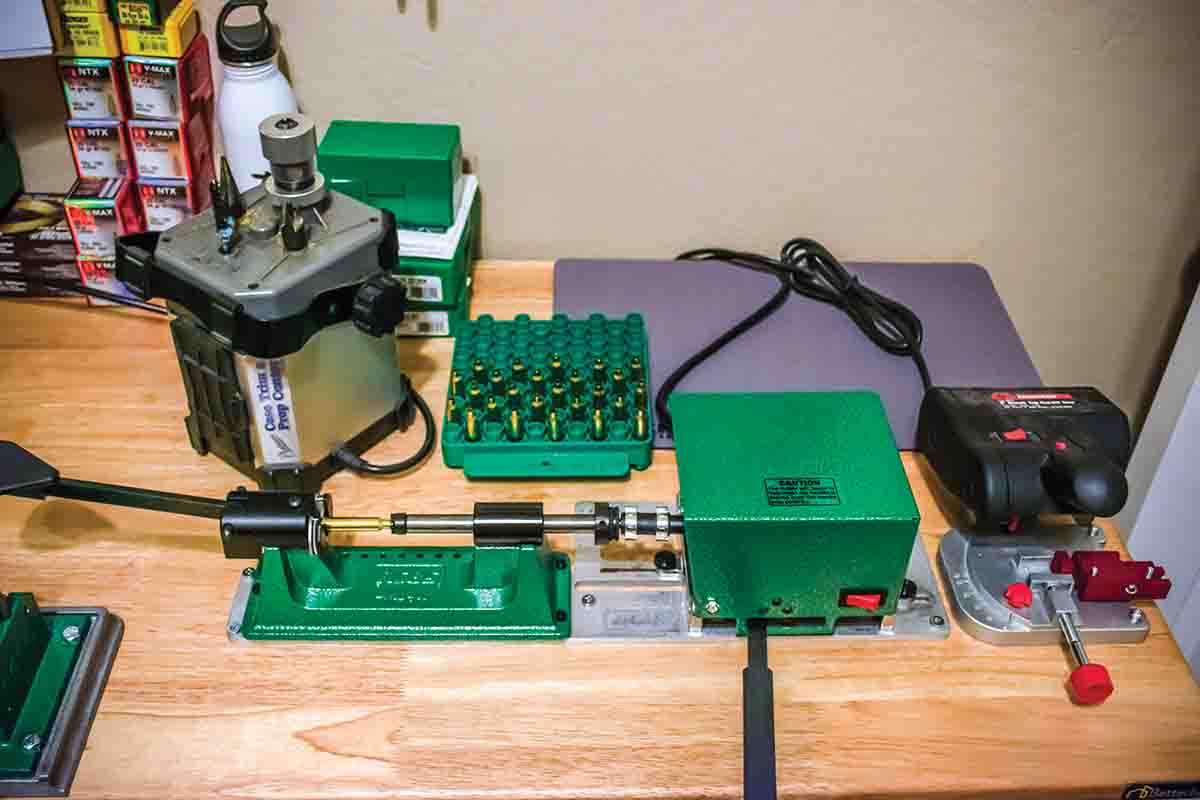
The next step was to maximize my use of space and efficiency, a company called InLine Fabrication specializes in this sort of thing. They make all sorts of hangers, press mounts and even a case ejector system to increase the efficiency of single-stage presses. The products are rock steady and built tough, capable of handling the largest of presses and equipment. The plan was to use an RCBS Rock Chucker Supreme press and they had a case ejector system for that very press. After much research and more measuring, an order was placed at InLine Fabrication. While the Rock Chucker press is a great single-stage press for handloading precision ammunition, it can leave something to be desired in the speed and priming department. So an order was placed directly through RCBS for its Accessory Base Plate-3, automatic priming tool and the Trim Pro-2 power case trimmer.
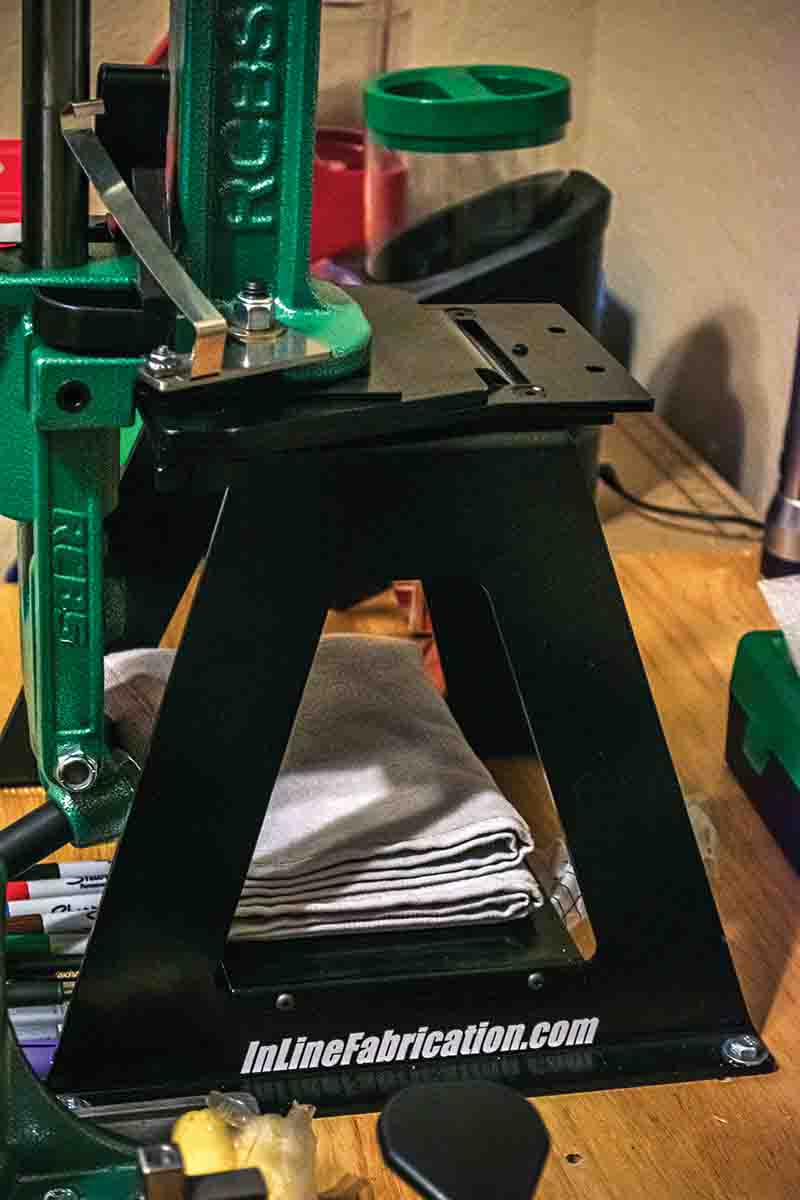
After a week of waiting, the products began trickling in with base plates, trimmers and accessories from RCBS; then, the mounts from Inline Fabrication, their InLine Rail wall mount system storage bins and so much more. The time to assemble everything was at hand, a single evening after work was enough to get the bench put together, InLine Rail on the wall secured to studs and an Ultramount with quick change plates on the bench. The Accessory Base plate from RCBS was mounted with the bench-mounted priming tool affixed to it. Everything was coming along nicely, after two nights of tinkering after work, the room had been transformed from a woman’s storage room to a full-fledged reloading room.
At the time of this writing, a few thousand rounds have been loaded and some accessories and tools have been added. One of the biggest time-saving tools was the Frankford Arsenal Platinum Series Case Trim and Prep Center. It takes up little room on the bench and, like any case prep center, saves a massive amount of time and hand cramps when chamfering and deburring case mouths or cleaning primer pockets. It is also capable of trimming bottleneck cases within approximately .003-inch accuracy depending upon the consistency of the brass. It uses the case shoulder for the datum line for the trimmer head. It is for this same reason that it cannot trim straight-walled cartridges and for this reason, the RCBS Trim Pro-2 power case trimmer still has a place on the bench. In order to make it easily removable, the screws were swapped for bolts and nuts as the unit does take up a lot of bench real estate. However, when trimming high quantities of cases, its operation is hard to beat.
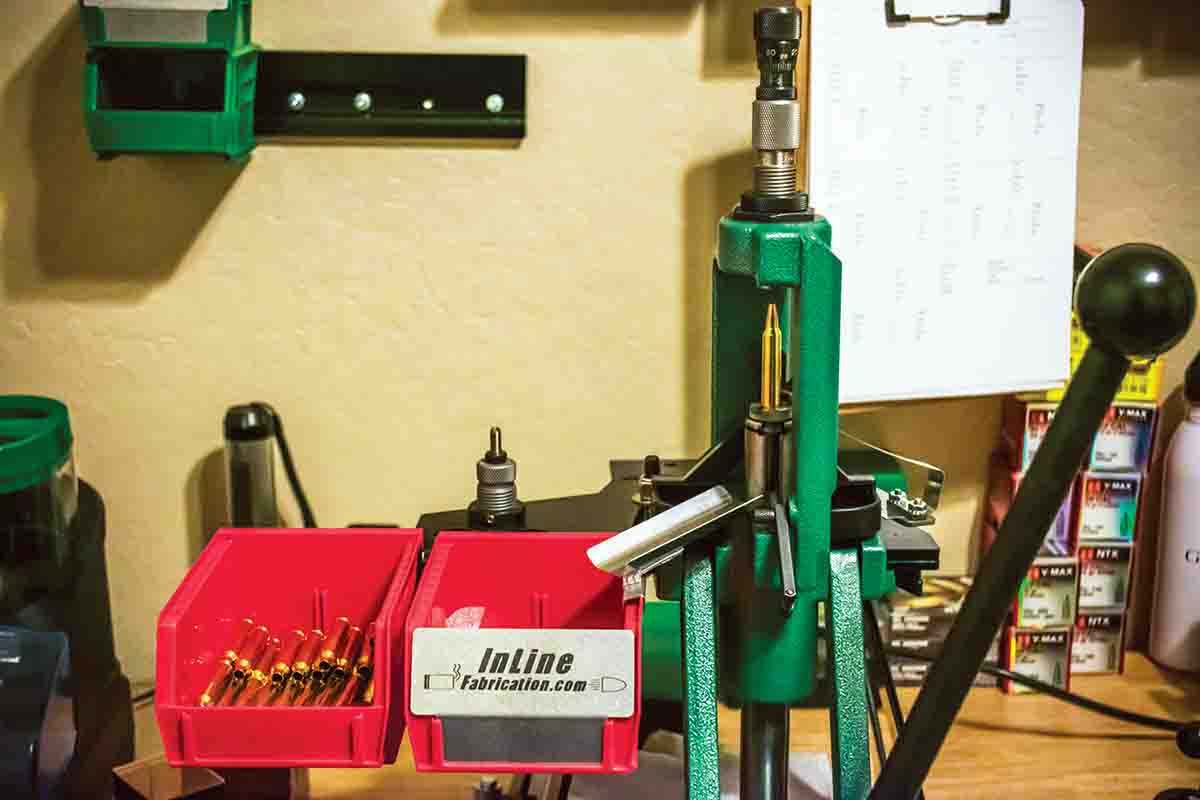
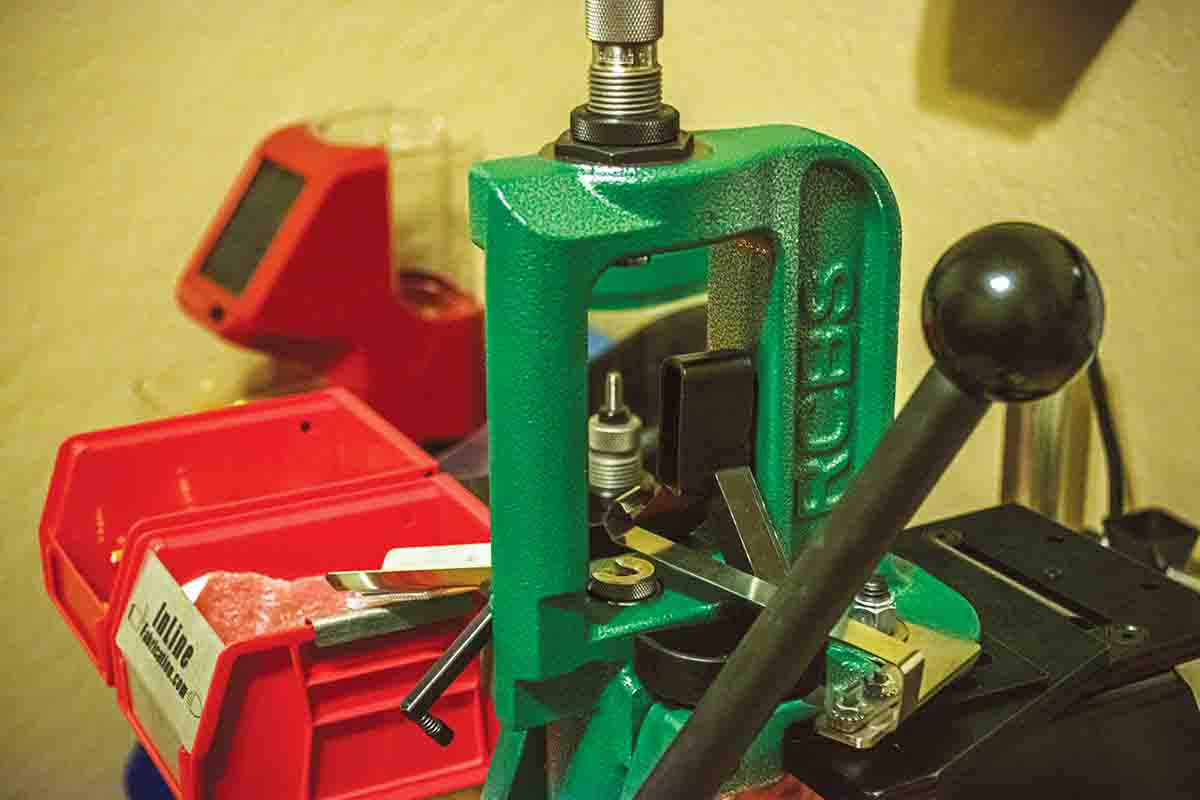
All in all, the setup works great and accomplishes everything it needs to. While it would be nice to have a little more bench space, it still gets the job done. Swapping tools and storing them is a lot of work at times, but working in large batches helps make the swaps less frequent. Having the mini bench/saw table separate from the main bench helps with scales and dispensers such as the RCBS MatchMaster powder dispenser. Taking full advantage of this allows me to have hands-free operation while dispensing and measuring powder. This allows other steps in the process to be completed. It also ensures accurate charges and prevents a bump of the bench from overcharging my powder pan. Casting bullets does get a little tight at times as my small workbench must be moved close to the window where a powerful fan can suck the fumes out of the room. However, it is certainly possible and for the amount of room available, there is an impressive amount of versatility with this setup. Of course, the reader can always adjust the tools and layout to suit his individual needs. Hopefully, this sheds some light on the subject and provides some ideas on how to have an effective and efficient setup.
To see an upcoming YouTube video about this setup, subscribe for free to Handloader TV.


